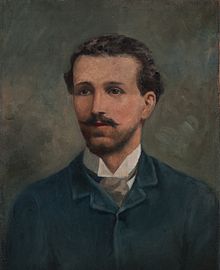
Gonzalo Arango Arias was a Colombian writer, poet, and journalist. In 1958 he led a modern literary and cultural movement known as Nadaism (Nothing-ism), inspired by surrealism, French existentialism, beat generation, dadaism, and influenced by the Colombian writer and philosopher Fernando González Ochoa.
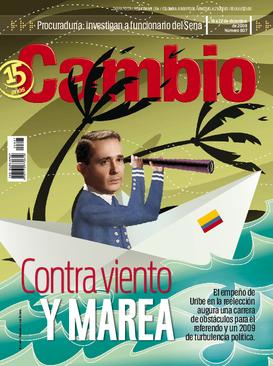
Cambio is a Colombian-based social, political and economics magazine. Founded with the name Cambio 16 it was later sold and Cambio in 1998 to Nobel laureate Gabriel García Márquez and other associates. In 2006 the magazine was sold to "Casa Editorial El Tiempo", the owner of Colombia's El Tiempo newspaper. The magazine ceased publication in February 2010.

José Custodio Cayetano García Rovira was a Neogranadine general, statesman and painter, who fought for the independence of New Granada from Spain, and became President of the United Provinces of the New Granada in 1816. He was executed a month later during the Reconquista, at the hands of Pablo Morillo.
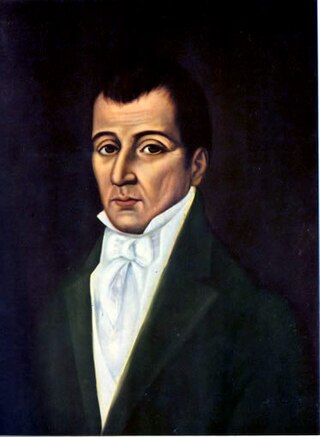
José Joaquín Justo Camacho y Rodriguez de Lago was a Neogranadine statesman, lawyer, journalist and professor, who worked for the Independence of the New Granada, what is now Colombia, and participated in the Open Cabildo which declared the Act of Independence, of which he was also a signer. He was executed during the Reign of Terror of Pablo Morillo after the Spanish invasion of New Granada.

Central Cemetery of Bogotá is one of the main and most famous cemeteries in Colombia located in Bogotá. Houses several national heroes, poets and former Colombian presidents. It was opened in 1836 and was declared National Monument in 1984. Some of the sculptors of the mausoleums are Tenerani and Sighinolfi.
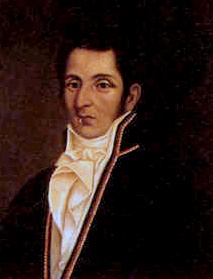
Manuel Rodríguez Torices was a Neogranadine statesman, lawyer, journalist, and Precursor of the Independence of Colombia. He was part of the Triumvirate of the United Provinces of New Granada in 1815, and served as Vice President of the United Provinces after the triumvirate. He was executed during the Reign of Terror of Pablo Morillo in 1816.

The Academia Colombiana de la Lengua is an association of academics and experts on the use of the Spanish language in Colombia. It is based in Bogotá, Colombia's capital, and is a member of the Association of Spanish Language Academies.

José María Vergara y Vergara was a Colombian writer, journalist, politician, historian and diplomat. Vergara y Vergara is known for writing the first literary history of Colombia, a detailed chronological compilation of authors, works, and literary movements between 1538 and 1820. Vergara founded and directed the Colombian Academy of Language alongside Manuel Antonio Caro, and Jose Cuervo. Considered the most prestigious and significant colombian author of the 19th century

Francisca Josefa de la Concepción Tunja (1671–1742) was a Spanish Neogranadine nun and mystic in the region of New Kingdom of Granada which later became Colombia. The first recorded woman writer of what now is Colombia, her devotional and autobiographical writings were published posthumously.

Jose Maria Quijano Wallis was a Colombian lawyer, diplomat, politician and historian.

Diego de Torre(s) y Moyachoque was cacique of Turmequé, in the New Kingdom of Granada. He served as chief from 1571 to his death. De Torres y Moyachoque was a mestizo, the child of a Spanish conquistador and a Muisca noble. He is known for his defense of the local Muisca and resistance against the Spanish encomenderos, particularly his half-brother Pedro de Torres. De Torres y Moyachoque is also known as the first cartographer of the lands surrounding the capital of the New Kingdom of Granada, Santa Fe de Bogotá.
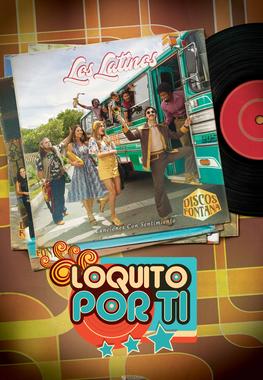
Loquito por ti, is a Colombian telenovela that premiered on Caracol Televisión on 10 October 2018. The telenovela is based on the life of Colombian tropical music singers, Rodolfo Aicardi, and Gustavo "El Loko" Quintero.
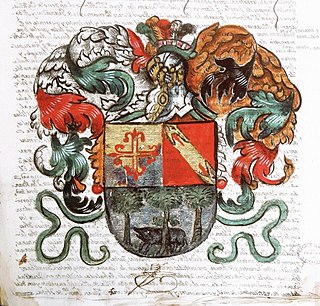
The Arboleda family is Colombian political and aristrocratic family originally from the city of Popayán, which had its period of greatest influence between the 17th and 20th centuries in the South American country and whose origins date back to the Arboleya region in Asturias, Spain.
José María Sierra Sierra known as 'Pepe' Sierra, was a Colombian businessman and landowner. who amassed part of his fortune speculating in the drink monopoly. He was considered the richest man of Colombia during the 19th Century.

The first family of Colombia is the family of the president of Colombia, who is both head of state and head of government of Colombia. It is an unofficial title for the family of a republic's head of state. Members of the first family consist of the president, the First Lady of Colombia, and any of their children. However, other close relatives of the president and first spouse, such as parents, grandchildren, stepchildren, and in-laws, may be classified as members of the first family for context purposes. The first family of Colombia live in the presidential residence Casa de Nariño in Bogotá, Colombia.








